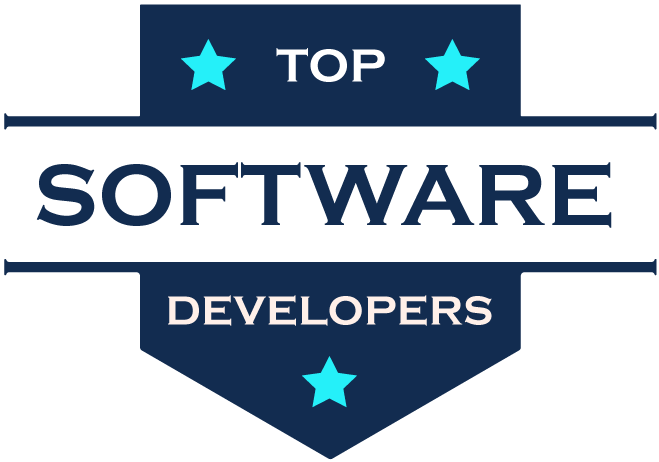Did you know that the U.S. logistics and transportation market is valued at over $2 trillion, with mobile apps now playing a vital role in streamlining delivery operations, optimizing supply chains, and improving last-mile efficiency?
From startups offering same-day delivery to enterprise-level freight tracking platforms, logistics apps are redefining how goods move across America.
But here’s the big question:
How much does it cost to build a logistics app in the U.S.?
Let’s unpack it.

1. What Type of Logistics App Are You Building?
The type of logistics solution you’re launching determines the app’s architecture, features, and development cost. Popular logistics app categories in the U.S. include:
- Courier and Last-Mile Delivery Apps (like Roadie, Uber Freight)
- On-Demand Delivery Platforms (for groceries, retail, food, documents)
- Fleet and Vehicle Management Systems
- Freight Booking and Trucking Platforms
- Supply Chain & Warehouse Automation Apps
- B2B Logistics Integrators with APIs and real-time syncing
Each category comes with its own technical requirements, compliance standards, and integration needs (such as ELD, DOT tracking, or TMS compatibility).
2. Must-Have Features for a U.S. Logistics App
U.S. customers and businesses expect top-tier user experience, automation, and data accuracy. To stay competitive, your app should include:
- Multi-role access (driver, dispatcher, admin, customer)
- Real-time GPS tracking & route optimization
- Push notifications and delivery updates
- Digital signature capture and proof of delivery (POD)
- In-app payments (Stripe, PayPal, Apple Pay)
- Compliance integrations (FMCSA, ELD systems, etc.)
- Analytics dashboards and performance metrics
- SMS/Email alerts and customer communication tools
- Cloud data backup and multi-device sync
- APIs for ERP/TMS/CRM integrations
Optional features include AI route prediction, live traffic updates, fuel consumption logs, and autonomous dispatching.
3. UI/UX Considerations for U.S. Users
In the U.S., your logistics app will be used by a mix of field drivers, warehouse teams, dispatchers, and end users. That means your design must be:
- Highly intuitive and low-friction
- Optimized for both iOS and Android
- Fully responsive for tablets, smartphones, and desktops
- Accessible (ADA compliance with voice commands, color contrast, etc.)
- Built with scalability in mind (cloud-native architecture)
In such a competitive market, user experience is non-negotiable. Your app must be fast, stable, and user-friendly even under high load conditions.
4. Cost Breakdown for Logistics App Development in the U.S.
App development in the U.S. varies widely based on complexity, platforms (iOS, Android, Web), backend infrastructure, and whether you’re outsourcing or using an in-house team.
Here’s what you can expect:
- Basic Logistics App (MVP): $40,000 – $80,000
- Core features: Order creation, driver assignment, basic tracking, dashboard
- Mid-Level Logistics Platform: $80,000 – $150,000
- Includes: Route optimization, driver management, real-time map tracking, payments, POD, admin panel
- Enterprise Logistics System: $200,000 – $500,000+
- Includes: Multi-user access, integration with ERP/WMS/TMS, AI features, detailed analytics, real-time compliance updates
Building for multiple states, scaling for thousands of users, or integrating cross-border logistics systems will raise the cost further.
5. Development Options: Who Should Build It?
You have three main routes for development:
- U.S.-based freelancers: Can help with MVPs but lack the structure for enterprise projects
- In-house development teams: Offer control but require major investment ($150k+ per developer annually)
- Trusted development partners like Appfur: We provide scalable logistics solutions tailored to U.S. businesses at a global rate—without sacrificing quality or speed
At Appfur, we specialize in building custom logistics platforms for U.S. startups, courier services, and enterprise clients—equipped with full-stack development, UI/UX design, and post-launch support.
6. Other Hidden and Ongoing Costs
Beyond development, there are essential costs you must budget for:
- Cloud infrastructure (AWS, Azure, GCP)
- Mapping and location services (Google Maps, Mapbox, HERE)
- SMS gateways, notifications, email servers
- Monthly maintenance & performance monitoring
- Security & compliance tools (SOC 2, SSL, encryption)
- Customer support integration (Zendesk, Intercom)
- Digital marketing and SEO to attract users
Launching the app is just the beginning. The U.S. logistics industry demands continuous optimization, updates, and scalability.
Final Thoughts
Whether you’re building a last-mile delivery app, managing freight carriers, or streamlining enterprise supply chains, a logistics app can be your most valuable business asset.
But to succeed in the U.S. market, it needs to be secure, scalable, and smart.
At Appfur, we help founders and logistics operators across the U.S. turn big ideas into high-performing mobile and web apps. We understand both the technology and the business operations that power successful logistics systems.
If you found this post valuable and you're serious about turning your app idea into a real product, let’s take the next step together. At Appfur, we specialize in transforming early-stage concepts into fully functional, user-focused applications.
We’re offering a free 30-minute strategy session to help you:
- Validate your app idea with an expert
- Identify the fastest, most cost-effective path to launch
- Get a clear, actionable plan tailored to your goals
No hard pitches. No fluff. Just real value.
Click the link below to schedule your free call — spots are limited each week.
